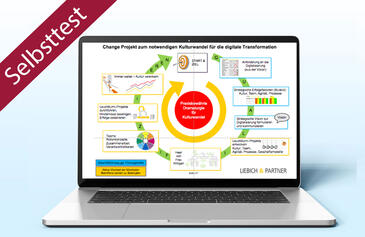
Critical Chain in Japan Disasters – Rapid Response, Rapid Repairs

Using Critical Chain Project Management public authorities can respond to natural disasters by far more quickly and effectively. Two case studies from Japan show how it works. A German example shows what damages could have been prevented.
Management Summary
Als Mitglied erhalten Sie die wichtigsten Thesen des Beitrags zusammengefasst im Management Summary!
Critical Chain in Japan Disasters – Rapid Response, Rapid Repairs

Using Critical Chain Project Management public authorities can respond to natural disasters by far more quickly and effectively. Two case studies from Japan show how it works. A German example shows what damages could have been prevented.
Management Summary
Als Mitglied erhalten Sie die wichtigsten Thesen des Beitrags zusammengefasst im Management Summary!
In parts of Germany, Spring 2013 was one of the wettest on record. Wet weather was the cause of widespread flooding. However not yet completed new and better flood defences certainly contributed to dramatically greater than necessary damage to people and infrastructure in, for example Grimma. For many citizens it is difficult to understand why defences planned after the 2002 floods were still not completed!

Fig. 1: Aerial Photos of Grimma in 2013 (source: www.leipzig-luftbilder.net).
Bild vergrößern
The Japanese do a much better job of dealing with disasters quickly and effectively. The Tsunami of 2011 is just one example. Japan suffers even greater and more frequent calamities due to the islands’ volcanic and seismic activity (not to mention extreme weather). The islands of Japan suffer landslides, earthquakes, Tsunamis, far beyond their fair share. Money spent on prevention and reconstruction is proportionally much more than in any other country or region of the World. For Japan effective and rapid implementation of infrastructure projects is essential. Compounding Japan’s problems is the need to minimize the financial cost. Regional and national governments are so financially strapped that often they are unable to allow builders and contractors a decent profit.
The focus of this article is:
- How Germany dealt with the threat of more environmental disasters and
- the Japanese win-win-win-strategy to deal with theirs.
The wins were:
- Japanese citizens saw rapid repair or protection of key infrastructure.
- The ministry was able to contract more work without increasing funds
- Builders and contractors are no longer constantly on the brink of bankruptcy.
While more projects were completed more reliably, faster and without adding resources or spending additional money, the Japanese perceived that harmony created among the three parties – the Japanese citizens, the Japanese Ministry for Infrastructure and Japanese builders and contractors – was the major key benefit. Today rapid consensus on the right projects, the right decisions and how to manage projects is achieved harmoniously and effectively.
The German Story
In 2002 Grimma, a town of 30,000 on the banks of the river Mulde, suffered huge water damage due to the floods of that year. Grimma alone accounted for 250 million euro of damage to 700 houses and infrastructure, like swept away bridges. Projects to prevent future damage were proposed and were to be financed by the European Union and the Free State of Sachsen. Citizens strongly objected to these projects. They feared a devaluation of the historic cityscape and an impact to their groundwater. The conflict over what was to be done delayed work until August 2007. By 2013 completion was expected in 2017 – far too late for the huge floods of 2013 (and who knows what might still happen). There is a possibility that the partially completed protection wall at least limited last 2013's damage.
Two obvious problems meant that in 2013 Grimma again suffered huge damage to houses and infrastructure:
- They did not have a facilitator to help the parties to find their win-win-solution after the 2002 floods.
- It takes far too long to complete flood defence projects once they are decided.
No Facilitator to help find a Win-Win-Solution
It took five years to resolve the conflict between a citizen movement that had the above-mentioned fears on one side and the authorities and other citizens who wanted to make sure huge damage due to flooding would never be repeated. A win-win-strategy, without compromise, was needed to satisfy both parties.

Fig. 2: The conflict is on the right on either side of the red arrow: The citizen movement against flood defenses and the authorities (with other citizens) are on either side of the conflict. To the immediate left of the conflict are the needs of both sides, and both needs are valid. On the very left is the objective common to both.
Bild vergrößern
Sofort weiterlesen und testen
Erster Monat kostenlos,
dann 24,95 € pro Monat
-
Know-how von über 1.000 Profis
-
Methoden für alle Aufgaben
-
Websessions mit Top-Expert:innen






Wolfram Müller
03.09.2014
Walter Plagge
04.09.2014
Dr. Gerhard Friedrich
07.09.2014
Rudolf Burkhard
10.09.2014